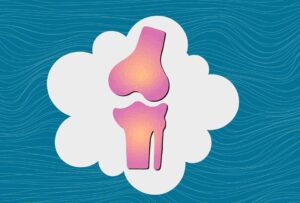Workout like a ‘weekend warrior,’ soothe with self touch, follow the 20-20-20 rule, plus more wellness tips to know this week

Fall is in full swing. One way to get in the mood? Try incorporating autumn colors into your life. Experts say that shades like golden yellow, burnt orange and deep red evoke warm, cozy vibes — perfect for cuddling up with a book and a Pumpkin Spice Latte. Pick up a scarf in your favorite fall color or, if you’re in the mood to redecorate, a throw blanket for your living room couch.
While you may be in full sweater-weather mode, dermatologists say that you still need to wear sunscreen. Cloudy days don’t offer much protection from U.V. rays, and sun damage comes from cumulative exposure all year long — not just your summer beach outings.
And speaking of cloudy days, make sure to check out the weather report for your area and, since you’re already looking towards the sky, check out your horoscope too. Then dive into these wellness bites.
📆 Be a ‘weekend warrior’
Do you struggle to sneak in exercise time during the busy work week? Working out just two days a week — like Saturday and Sunday, when your schedule is probably clear — can be just as beneficial, according to research published in the journal Circulation. Following the Centers for Disease Control and Prevention’s recommended 150 minutes of moderate-to-vigorous activity, even if concentrated on weekends, is still linked to a lower risk of hypertension, diabetes and obesity, so hit the gym or the hiking trail whenever fits best into your schedule.
✋ Soothe with self touch
Physical touch can be soothing, but you don’t need a bear hug from a loved one in order to reap the benefits. According to a study from the University of California, Berkeley, a 20-second session of self touch, such as placing a hand over your heart or stroking your arms, can reduce stress and increase self-compassion. Want to try it yourself? Place a hand on your heart or gently wrap your arms around your body, and focus on the comforting sensations you experience.
😴 Follow the 3-2-1 sleep rule
Struggling with sleep? Following this simple guideline from sleep specialist and clinical psychologist Michael Breus can help you drift off consistently. Three hours before you go to sleep, stop drinking alcohol; two hours before you go to sleep, stop eating food; and one hour before sleep, stop drinking fluids.
Doing so can ensure that you’ll not only get to sleep, but stay asleep comfortably. While you may drift off faster after drinking alcohol, it ultimately disrupts your sleep cycles, particularly in the REM stage which aids in your body’s recovery. Eating too close to bedtime, meanwhile, can lead to indigestion or acid reflux, and drinking fluids right before hitting the hay makes you much more likely to wake in the middle of the night to use the bathroom.
While you’re at it, check the temperature in your bedroom: a chilly 65 to 67 degrees is ideal for rest, according to experts.
🐕 Get a dog for … better gut health?
Weird but fascinating: A study published in Clinical Gastroenterology and Hepatology found that children who grew up with a dog in their home between ages of 5 and 15 had a healthier gut microbiome, meaning they had a more diverse and balanced community of good bacteria in their digestive system, protecting them from issues caused by inflammation. Researchers also saw a reduced risk of developing Crohn’s disease overall which affects about 40,000 American children. So, if your kids are begging you for a furry friend … you might want to give in.
🍽️ Dine solo
Take yourself out to eat! Dining at a restaurant solo can help you practice mindful eating. Since you’re not distracted by conversation, you can focus on the taste and texture of your meal, which can be a calming, meditative experience. Eating alone also builds your confidence by making you more comfortable with your own company. One tip? Put down your smartphone, which can take you out of the moment, especially if you tend to get up in destructive doomscrolling in your quiet time. If you need something to feel less self-conscious about your solo time, try bringing a book or crossword puzzle instead.
🥬 Get more iron
Americans aren’t getting enough iron, according to a new study. Even if you’re not suffering from a condition like anemia or chronic kidney disease, which is linked to low iron levels, you still need the adequate amount (about 8 mg a day for adult men and 18 for adult women who are menstruating) in order to support things like your energy levels, hormone production and oxygen transportation from the lungs to the rest of your body.


